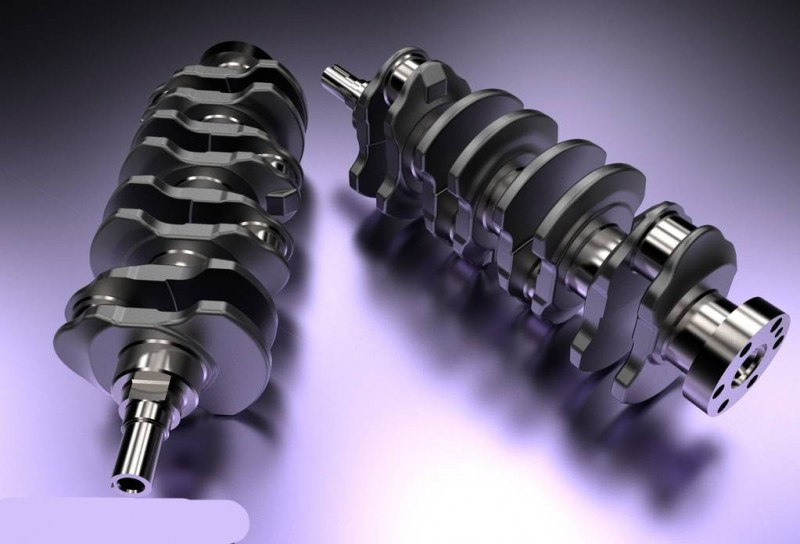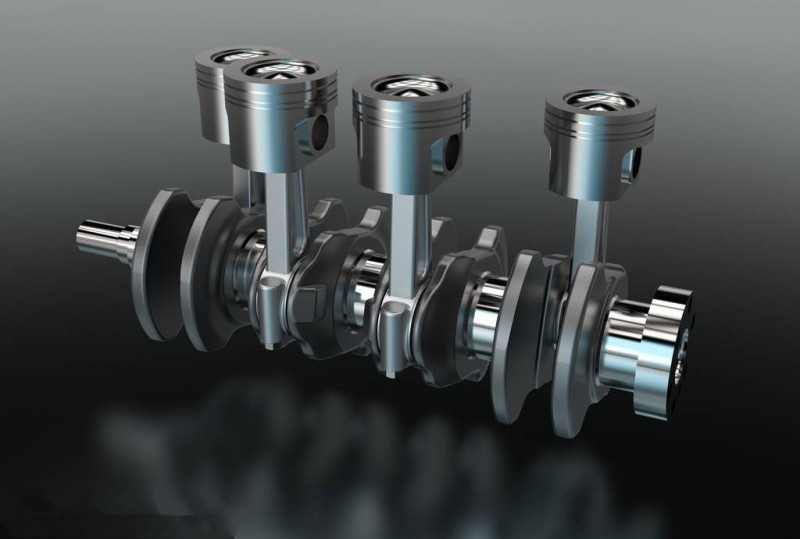The function of the crankshaft is to convert the gas pressure from the piston connecting rod group into torque for external output, and to drive the valve train and other auxiliary devices. Most of them are made of high-quality medium carbon steel, medium alloy carbon steel or spheroidal graphite cast iron. The structure of the crankshaft includes front shaft, main journal, connecting rod journal, crank, counterweight, rear shaft, etc., and there are oil passages running through the main journal, crank and connecting rod journal to lubricate the main journal and connecting rod. Journal. Because it will be subjected to various forces in use, there will be a certain amount of wear, and different parts have different wear characteristics.
Wear characteristics of main journal and main bearing bush
The wear of the main journal along the axial direction should be uniform, and the amount of wear in the radial direction is uneven, and there will be a slight ellipticity. Since the intermediate journal is often subjected to greater force, its wear amount is often greater than that of the two ends. The radial wear of the main bearing bush corresponds to that of the main journal. The largest wear part is on the lower bearing, and the wear of the intermediate bearing bush is greater than that of the two ends.
Wear characteristics of connecting rod journal and connecting rod bush
The radial wear of the connecting rod journals and bearings is uneven, and the wear on the inner side is relatively large. The uneven wear causes the connecting rod journal to form a certain ellipse in the radial direction, and the axial direction is generally uniform. The connecting rod with asymmetric large-end structure will become tapered after wear due to uneven load distribution on the connecting rod journal; the connecting rod with a symmetrical large-end structure will cause the same consequences if it is bent.
The most worn part of the connecting rod journal is generally on the inner side of each journal, that is, on the side of the crankshaft centerline, so that the journal is out of round; and the part that wears into a cone is generally on the side of the lubricating oil passage where impurities are attached. On the side and the place where the force is large.

The wear of the crankshaft can be measured with a micrometer. The wear of the short journal of the crankshaft is mainly to be inspected for roundness errors, and for the long journals, the roundness and cylindricity errors must be inspected. The specific measurement method is: take two sections for each journal, and take two points for each section. The half of the difference between the maximum diameter and the minimum diameter of the same section is the roundness error; the half of the difference between the maximum diameter and the minimum diameter in the two sections is the cylindricity error. Under normal working conditions, the wear of the crankshaft is extremely small, generally not exceeding 0.01mm, and the cylindricity is even less than 0.0025mm.
Common forms of crankshaft damage include journal wear, cracks, burns, bends or fractures, etc. We can analyze the working state of the engine and the cause of damage from the wear state of the crankshaft. For example, the amount of crankshaft wear is too large, and the bearing bush even leaks the background color. This situation is generally caused by poor lubrication, low oil pressure, and oil not meeting the requirements for use. The crankshaft cylinder is too large, indicating that the engine has been working under heavy load for a long time. ; The crankshaft burns, blues, locks, must be caused by poor lubrication, the most common is lack of oil.

